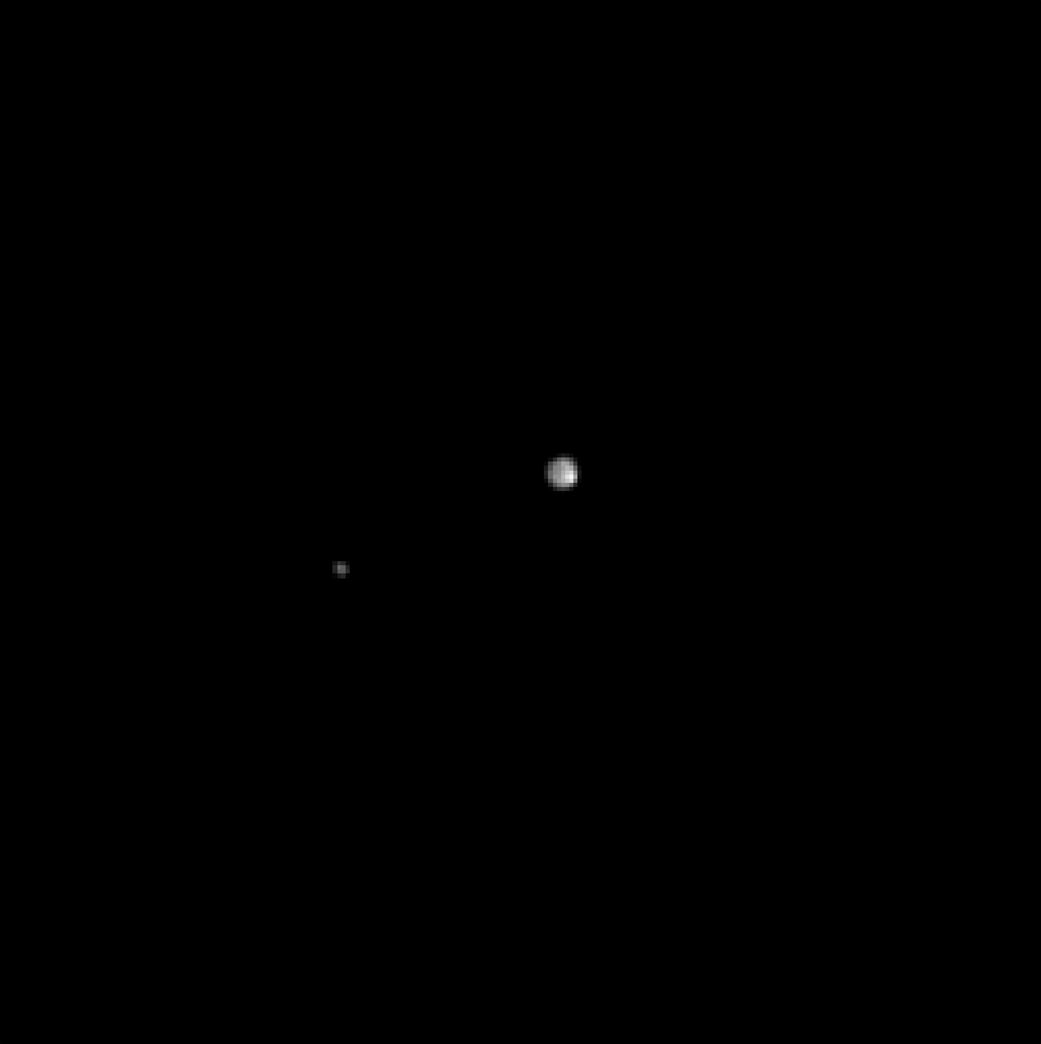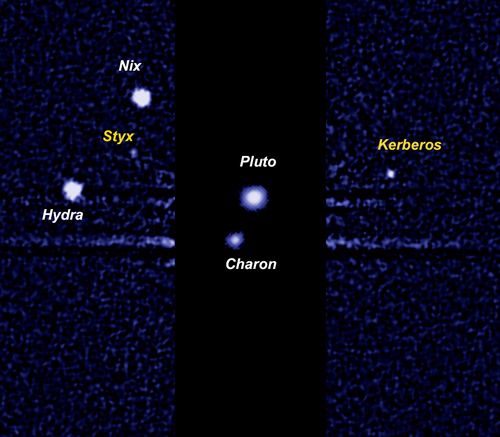Weird Orbital Behaviors Offer Clues to the Origins of Pluto’s Moons
Solving the mystery of these satellites could help astronomers understand “Tatooine” exoplanets that orbit binary stars
/https://tf-cmsv2-smithsonianmag-media.s3.amazonaws.com/filer/45/0a/450a84a7-ebe3-4110-8b12-261af1d48be7/137120main_hst_pluto1_full.jpg)
The dwarf planet Pluto and its system of five moons are about as mysterious as the underworld of antiquity that inspired their names. An average of about 3.7 billion miles from Earth, Pluto is the only one of the original nine planets that has yet to be observed at close range—though this will change when the New Horizons probe performs a flyby in mid-July. It also has an unconfirmed number of moons, which adds to the complications of calculating orbital trajectories.
“If you polled my science team, I’m quite sure that the majority would be surprised not to find more moons,” says Alan Stern, principal investigator for the New Horizons mission. “The question is are we going to find 2, or 10 or 20? I wouldn’t put my bets on zero.”
A new study published this week in Nature helps us better understand the orbits of Pluto’s known moons, which in turn can offer clues to the mechanics of exoplanets that orbit twin stars. But the work also points to some inconsistencies that suggest the formation of these moons is still a conundrum.
Pluto and its largest moon, Charon, are locked in a binary dance, orbiting a common center of mass due to their gravitational influence on one another. The four other known satellites in this system—Styx, Nix, Kerberos and Hydra—also orbit that common center rather than Pluto itself. This means they have strange wobbles in their near-circular orbits, and they behave differently from other moons in the solar system.
This complex orbital relationship, coupled with the difficulty of observing the distant system, has made it tough to figure out how Pluto and its family formed. The leading theory is that, like the giant impact that formed Earth’s moon, Charon was born when a large object smashed into Pluto during the violent formation of the solar system, and the other small moons accreted from the leftover debris.

“We are still baffled by how the system formed,” says study co-author Mark Showalter, a senior research scientist at the Search for Extraterrestrial Intelligence (SETI) Institute. “I think everyone believes that, at some point in the distant past, a large object bashed into ‘proto-Pluto’ and the moons formed out of the debris cloud. However, after that point in the story, details get very sketchy.”
Now, analysis of data collected from the Hubble Space Telescope following the discoveries of Kerberos and Styx suggests that Styx is locked into an orbital resonance with Nix and Hydra, supporting the impact theory. Orbital resonance is when multiple bodies exert regular, periodic gravitational influence on each other so that they complete their orbits in a predictable pattern. The best known example is the Laplace resonance of Jupiter’s three moons, Io, Europa and Ganymede, which have an orbital resonance of 1:2:4. This means that Io orbits Jupiter four times for every one of Ganymede’s rotations, while Europa orbits twice in that same time.
Mathematical models by Showalter show that the resonances of all five Pluto moons could have been locked into a 1:3:4:5:6 relationship after the Charon-forming impact, very close to the current ratio of orbital periods for Pluto’s moons. This theory also explains the remaining resonance of Styx, Nix and Hydra. But there is a complicating factor: The other bodies in the Pluto system inject chaos into those moons’ otherwise stable configuration.
Styx, Nix and Hydra appear to be locked in resonance most of the time, but Nix and Hydra are periodically thrown into chaos, and it's been difficult to pinoint the cause. Chaotic orbits occur when a non-spherical object’s axis of rotation wobbles significantly, preventing it from falling into a synchronous orbit. Saturn’s “sponge” moon Hyperion rotates chaotically, for example, and astronomers believe that its wobbly motion is caused by Hyperion's 3:4 orbital resonance with the larger moon Titan. But the new photometry and dynamical models run by Showalter suggest that a binary system like Pluto and Charon can also cause non-spherical moons to rotate chaotically, so even with the chaotic orbits of Nix and Hydra, the impact scenario still seems plausible.

Kerberos, however, throws a major wrench into the impact theory. Based on the observational data from Hubble, Nix and Hydra appear to be bright objects, similar to Charon. But Kerberos seems much darker. With a mass that is roughly one-third that of Nix and Hydra, Kerberos only reflects about 5 percent as much sunlight. If Pluto’s smaller moons were formed from the aggregated material of a single major collision, then they would have a direct relationship between size and brightness. A heterogeneous satellite system, such as Pluto’s appears to be, remains an enigma.
“This research is a bit like archeology,” says Showalter. “We have just unearthed a few pieces of ancient pottery but don’t yet know how they fit together.”
The New Horizons flyby of the Pluto system on July 14 will help answer many of the questions raised in the Nature paper. The instruments on New Horizons will be able to determine whether Kerberos truly is darker than the other moons, and they will take accurate measurements of the shapes of all of Pluto’s moons. Perhaps most exciting, the flyby will reveal if any other moons or rings exist that influence the complex orbital mechanics of the Pluto system.
“Each planetary system has a formation story to tell,” Showalter explains. “Understanding their histories helps us to understand other kinds of astrophysical disks, including galaxies and exoplanetary systems. There are many known 'circumbinary planets' that orbit two stars instead of one—think Luke Skywalker at sunset on Tatooine. I think the Pluto system is showing us new details about how these much larger dynamical systems operate.”
/https://tf-cmsv2-smithsonianmag-media.s3.amazonaws.com/accounts/headshot/bennett.jpg)
/https://tf-cmsv2-smithsonianmag-media.s3.amazonaws.com/accounts/headshot/bennett.jpg)